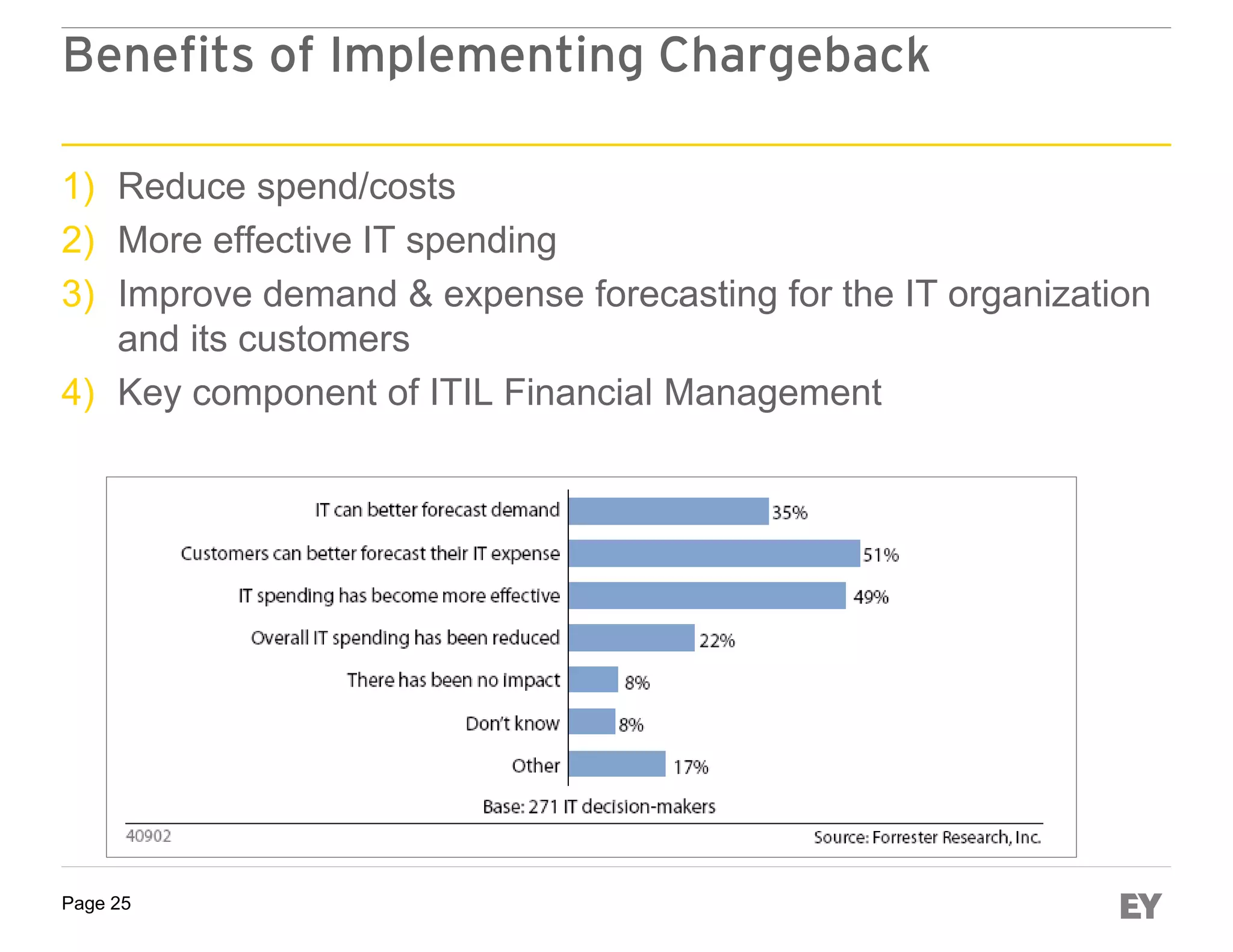The document discusses Ernst & Young's IT Financial Management journey framework to help organizations improve transparency and increase satisfaction around IT costs and services. The framework is a 6 step process that includes: 1) conducting a current state assessment, 2) defining IT services, 3) calculating unit costs for each service, 4) establishing metrics and reporting, 5) implementing a chargeback model, and 6) creating a bill of IT. The goal is to break down IT costs and clearly show how they align with specific services in order to demonstrate value to the business.








































